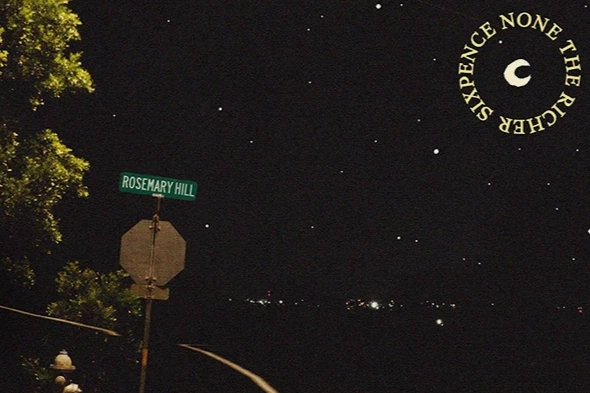“Spider-Man: Into the Spider-Verse” provides an excellent and unique take compared to any other Spider-Man movie. Spider-Man has been a staple superhero with his red and blue costume, journalist alter ego and spider-esque superpowers. Basically, the Spider-Man we all know and love has had this niche set in the Marvel movie-going community… until “Into the Spider-Verse” debuted.
New Spider-Men were created and each origin story was diverse, introducing the many other Peter Parkers and Spider-Men from different dimensions, even including a Spider-Woman. As such, each of the characters were different with attributes the original Spider-Man does not have. Their introductions provided a humorous and lighthearted approach to superheroes’ origin stories. In general, the movie attacked normality of something that was so generic and known to us which makes this movie feel brand new.
Although the Spider-Men introductions were fun, Peter B. Parker was the more serious character with the most substance. For me, as the journey progressed, I started to become attached to Peter B. Parker. Jake Johnson playing Peter B. Parker was a match made in heaven. His down-to-earth vibe was so natural in his voice acting, characterizing Peter B. Parker so well which made his character come to life.
With so many superhero movies, the hero story feels overused nowadays, demeaning the value of a superhero. However, this movie addresses this problem, thus making the movie relatable and impactful. Instead of the typical meet-up with the mutated spider and naturally learning about the powers, the protagonist struggles to learn how to utilize his powers correctly. His powers of shocking and invisibility worked sporadically, demonstrating his immaturity and setting up for the ultimate character development.
The story begins with the main protagonist and main Spider-Man Miles Morales (played by Shameik Moore), who is half-black and half-Puerto Rican, singing to the tune of the song “Sunflower” by Post Malone. If anything, the story starts off with a sense of relatability with him moving to a different environment and family conflicts. Essentially, he starts off as just a normal kid doing normal things that any other kid would. This thought began the exponential character development Morales experiences, both superhero and boy.
Every superhero has a “rise-up,” and this movie was no exception. Morale’s “rise-up” was his leap of faith, representing his growth in maturity and responsibility. This montage scene of him working hard and overcoming his fears exhilarated the audience. By the end of it, I had the urge to say, “you go kid!” in the middle of the theater.
Even though the plot and character development were extraordinary, it was nothing compared to the breathtaking animation. The movie perfectly executes the balance of realism and unrealism, ultimately representing the surrealism of New York. Not to mention, the soundtrack is striking. Songs like “Scared of the Dark” and “Hide” played a major role in setting the mood of the scene. Whether it was a depressing or an inspirational scene, the background songs were well-incorporated.
The biggest flaw this movie had though was its predictability. Despite the scenes being perfectly executed, the audience can tell what is going to happen next. Who’s the mercenary? Why’s the girl in the lab hinted at so much? What’s so important about the cute girl? Questions like these were answered in an obvious approach. Regardless, I never lost interest in the movie and always clung to the edge of my seat.
Needless to say, this new Spider-Man movie is revolutionary. Morales is superhuman yet human. No matter how he saves the world, Morales is still a kid. His character exudes inspiration and youth, giving viewers the ultimate superhero movie experience and making this new Spider-Man generation at the top of any to predate it.
The Parkway West Pathfinder gives “Spider-Man: Into the Spiderverse” a 10/10.




![There are more than 20 open cardio machines at Crunch Fitness. I enjoyed the spacious environment at Crunch, a sentiment that was shared by sophomore Sanjana Daggubati. “[Going to] Crunch Fitness was the right decision because [it] feels more professional. Crunch’s workers are laid back, but not to the point where they don't care,” Daggubati said.](https://pwestpathfinder.com/wp-content/uploads/2025/09/IMG_5242-1-1200x900.jpg)

![Various empty Kit Kat wrappers crowd the desk, surrounded by scoring sheets. While production of Kit Kat flavors in the U.S. is limited, Nestlé, the owner of Kit Kat, manufactures hundreds of unique flavors in Japan, including the flavors ocean salt and passion fruit. “I thought there [were] some interesting flavors, and a lot of them were really unexpected,” senior Elle Levesque said.](https://pwestpathfinder.com/wp-content/uploads/2025/09/image-2.png)


![Pantone’s selection of the 2025 Color of the Year is revealed: Mocha Mousse. Ceramics teacher Ashley Drissell enjoys this year’s selection. “Maybe it’s the name but [Mocha Mousse] reminds me of chocolate and coffee. It makes me hungry. It’s very rich and decadent,” Drissell said.](https://pwestpathfinder.com/wp-content/uploads/2025/02/DSC_0015-1200x800.jpg)


